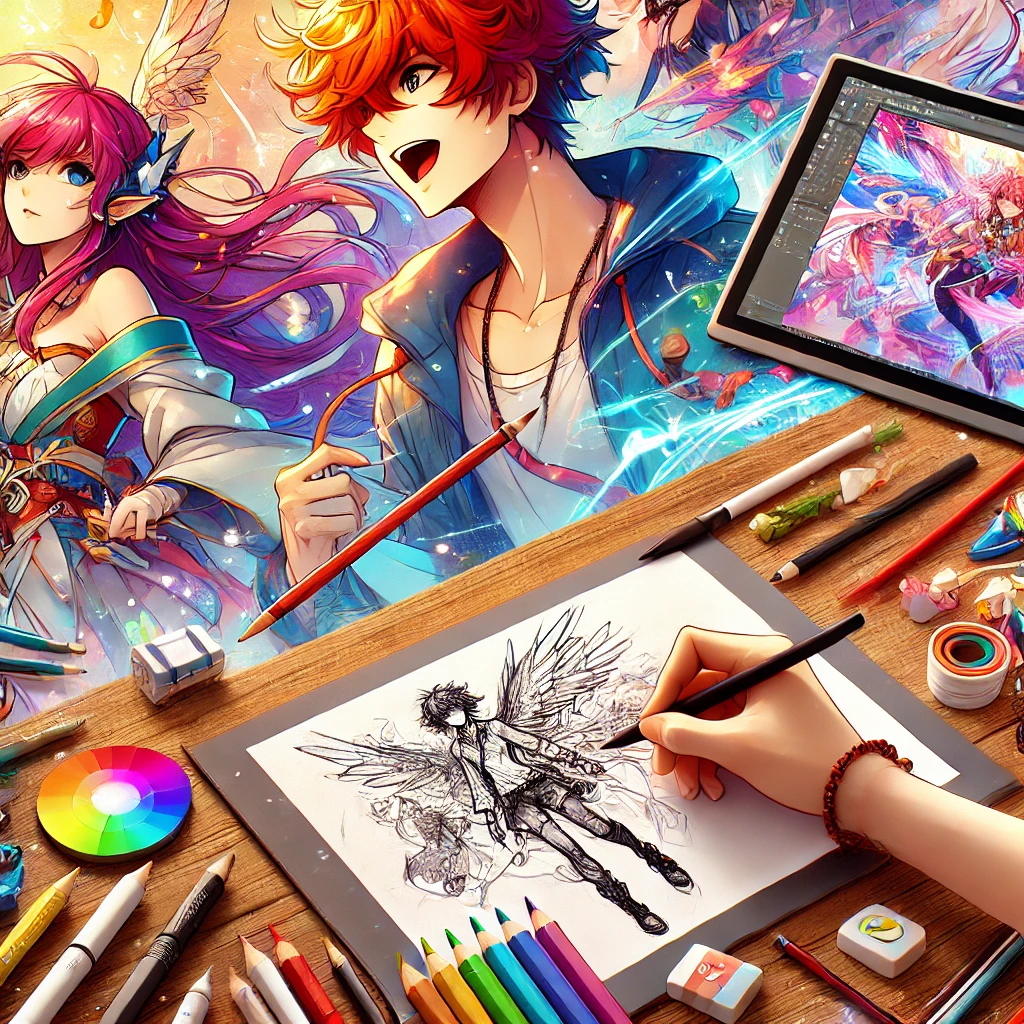Pencil:Cux3b23phcg= art is a versatile and expressive form of artistic creation that offers individuals the freedom to explore their imagination and creativity through the simple tool of a pencil. Whether you’re a seasoned artist or just starting, pencil:cux3b23phcg= art provides endless possibilities to bring your visions to life on paper.
History and Evolution of Pencil:Cux3b23phcg= Art
The journey of pencil:cux3b23phcg= art began centuries ago. The pencil itself dates back to the 16th century, with the first documented use of a graphite writing instrument recorded in 1565. Over time, pencils evolved from rudimentary lead styluses to the modern wooden-encased tools we use today.
Historically, artists like Leonardo da Vinci utilised pencils for their detailed sketches, laying the foundation for pencil:cux3b23phcg= art as a respected medium. As centuries passed, techniques advanced, and artists began to push the boundaries of what could be achieved with a pencil. From the Renaissance to Romanticism, pencil:cux3b23phcg= art has continuously adapted, incorporating new styles and methods to enhance its expressive potential.
Types of Pencil:Cux3b23phcg= Art
Pencil:Cux3b23phcg= art encompasses a variety of styles, each with its unique approach and technique. Understanding these types can help artists choose the right method for their creative expression.
Shading and Blending
Shading adds depth and dimension to drawings. Artists use different pencil grades, from hard (H) to soft (B), to create light and dark areas. Blending tools like stumps or blending pens smooth out transitions, making the artwork appear more realistic.
Contour Drawing
Contour drawing focuses on the outlines and edges of subjects. It emphasises the form and structure, often resulting in a minimalist yet striking representation.
Sketching
Sketching is the foundation of many artistic endeavours. It involves quick, loose lines to capture the essence of a subject. Pencil:cux3b23phcg= art sketches can range from simple doodles to complex compositions.
Stippling and Cross-Hatching
Stippling uses small dots to create texture and shading, while cross-hatching involves intersecting lines. Both techniques add intricacy and detail to pencil:cux3b23phcg= art, enhancing its visual impact.
Essential Tools and Materials
Creating an exceptional pencil:cux3b23phcg= art requires the right tools and materials. Here’s a rundown of what you’ll need:
- Pencils: A range of pencils from 2H (hard) to 6B (soft) allows for varying tones and textures.
- Erasers: Kneaded erasers and precision erasers help correct mistakes and add highlights.
- Paper: High-quality drawing paper with a smooth texture is ideal for detailed work.
- Blending Tools: Stumps, blending pens, or even cotton swabs help achieve smooth gradients.
- Sharpeners: Keep your pencils sharp for fine details.
Techniques and Tips for Mastering Pencil:Cux3b23phcg= Art
Mastering pencil:cux3b23phcg= art involves practising various techniques and understanding fundamental principles. Here are some tips to elevate your pencil art skills:
Shading Techniques
- Layering: Build up layers of graphite to achieve depth.
- Hatching: Use parallel lines to create shading and texture.
- Cross-Hatching: Overlap lines in different directions for richer tones.
Sketching Fundamentals
- Light Lines: Start with light, loose lines to outline your subject.
- Proportions: Pay attention to the proportions and relationships between different parts of your drawing.
- Perspective: Understanding perspective adds realism and depth to your art.
Blending and Texture
- Smooth Blending: Use blending tools to soften transitions between light and dark areas.
- Texture Creation: Vary your pencil strokes to create different textures, such as rough surfaces or smooth skin.
Step-by-Step Tutorials
Creating a Realistic Portrait
- Outline the Face: Lightly sketch the basic shape of the face and key features.
- Add Details: Focus on the eyes, nose, and mouth, ensuring accurate proportions.
- Shade the Features: Use different pencil grades to add shadows and highlights.
- Blend for Realism: Smooth out the shading to create a lifelike appearance.
- Finalise: Add final touches and refine any areas that need more detail.
Drawing a Detailed Landscape
- Sketch the Horizon: Define the landscape’s main elements, such as mountains, trees, and water.
- Outline Major Features: Draw the primary structures with light lines.
- Add Depth with Shading: Use shading to create depth and dimension.
- Incorporate Textures: Add details like tree bark, grass, and rocks using appropriate techniques.
- Refine and Blend: Smooth out the shading and enhance details for a cohesive look.
Common Mistakes and How to Avoid Them
Overworking the Drawing
Too much erasing or layering can lead to a muddy appearance. To avoid this, work gradually and build up tones slowly.
Ignoring Proportions
Accurate proportions are crucial for realism. Use measuring techniques or grids to ensure your drawing is proportionate.
Inconsistent Shading
Maintain consistent light sources to avoid confusion in your shading. Stick to one direction for light and shadows throughout the piece.
Famous Pencil:Cux3b23phcg= Artists
Exploring the work of renowned pencil:cux3b23phcg= artists can provide inspiration and insight into advanced techniques.
John Singer Sargent
Known for his detailed and expressive pencil drawings, Sargent mastered the art of capturing light and texture with precision.
Leonardo da Vinci
A pioneer in pencil art, da Vinci’s sketches reveal his deep understanding of anatomy and perspective.
Kathe Kollwitz
Her poignant pencil:cux3b23phcg= art reflects social issues and emotional depth, showcasing the medium’s power for storytelling.
Pencil:Cux3b23phcg= Art in Different Cultures
Different cultures bring unique perspectives and styles to pencil:cux3b23phcg= art. For example:
- Japanese Ink and Pencil Art: Combines traditional ink techniques with modern pencil shading for a harmonious blend.
- Western Realism: Focuses on lifelike representations and intricate details.
- Contemporary Styles: Incorporate abstract elements and mixed media, reflecting current artistic trends.
Benefits of Creating Pencil:Cux3b23phcg= Art
Engaging in pencil:cux3b23phcg= art offers numerous benefits:
- Enhances Creativity: Encourages innovative thinking and creative expression.
- Improves Focus: Detailed work requires concentration, enhancing mindfulness.
- Develops Fine Motor Skills: Precise movements refine hand-eye coordination.
- Therapeutic Effects: Drawing can be a relaxing and stress-relieving activity.
Digital Integration and Modern Innovations
The fusion of traditional pencil:cux3b23phcg= art with digital technology has opened new avenues for artists.
Digital Drawing Pads
Artists use digital pads to create pencil:cux3b23phcg= art digitally, allowing for easy corrections and experimentation with different styles.
Augmented Reality (AR)
AR pencil:cux3b23phcg= art offers interactive experiences, where viewers can engage with the artwork in immersive ways.
Software Tools
Programs like Adobe Photoshop and Procreate enhance pencil:cux3b23phcg= art by providing tools for blending, layering, and adding digital effects.
Maintenance and Care of Supplies and Artwork
Proper care of your tools and artwork ensures longevity and quality.
Tool Maintenance
- Sharpen Regularly: Keep pencils sharp for detailed work.
- Store Properly: Keep pencils and erasers in a dry, cool place to prevent damage.
Artwork Preservation
- Use Fixatives: Apply fixatives to protect finished drawings from smudging.
- Frame Properly: Use acid-free mats and frames to preserve the artwork.
Market Trends and Commercial Aspects
Understanding the market can help artists monetize their pencil:cux3b23phcg= art.
Growing Demand
There’s an increasing interest in pencil:cux3b23phcg= art, reflected in rising sales of art supplies and commissioned works.
Pricing Strategies
Artists can price their work based on factors like complexity, size, and reputation. Researching market rates helps set competitive prices.
Online Platforms
Platforms like Etsy, Instagram, and personal websites provide avenues to showcase and sell pencil:cux3b23phcg= art to a global audience.
Interviews and Insights from Professional Artists
Gaining insights from established pencil:cux3b23phcg= artists can inspire and guide emerging talents.
Artist Spotlight: Emma Thompson
Emma discusses her journey in pencil:cux3b23phcg= art, emphasising the importance of practice and finding a unique style.
Q&A with Michael Lee
Michael shares tips on overcoming creative blocks and integrating digital tools with traditional pencil techniques.
Resources and Further Reading
To deepen your understanding and skills in pencil:cux3b23phcg= art, explore the following resources:
- Books: “Drawing on the Right Side of the Brain” by Betty Edwards
- Online Courses: Platforms like Udemy and Skillshare offer comprehensive pencil art classes.
- Communities: Join forums and social media groups dedicated to pencil:cux3b23phcg= art for support and inspiration.
Future Trends in Pencil:Cux3b23phcg= Art
The future of pencil:cux3b23phcg= art looks promising, with several emerging trends shaping its evolution.
Sustainable Art Practices
Artists are increasingly adopting eco-friendly materials and methods, reflecting a global emphasis on sustainability.
Interactive Art Installations
Combining pencil:cux3b23phcg= art with technology creates interactive installations, enhancing viewer engagement.
Cross-Disciplinary Collaborations
Collaborations between pencil:cux3b23phcg= artists and professionals from other fields, like fashion or architecture, are creating innovative works.
Conclusion
Pencil:Cux3b23phcg= art stands as a testament to the power of simplicity and creativity. From its rich history to modern innovations, this medium continues to evolve, offering artists endless opportunities for expression. Whether you’re sketching a quick outline or crafting a detailed masterpiece, pencil:cux3b23phcg= art allows you to unlock your creativity with every stroke. Embrace the versatility and timeless appeal of pencil:cux3b23phcg= art, and let your imagination take flight.



